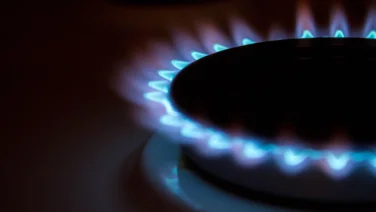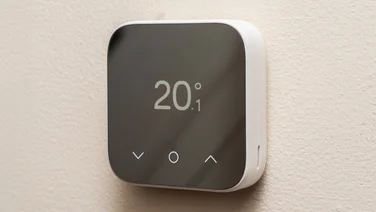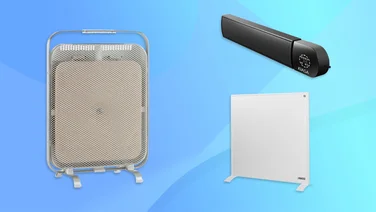To help us provide you with free impartial advice, we may earn a commission if you buy through links on our site. Learn more

Solar panels are a great way to cut your electricity bills as well as your carbon footprint, but they can cost several thousand pounds to install. The average cost of a typical 3.5kW solar PV system is currently around £6,000, roughly 10% of which pays for professional installation. To save cash, you may be tempted to buy a DIY solar panel kit and fit your panels by yourself.
DIY solar panels are widely available and many are excellent value compared with the cost of professional installation. For example, a full 3.4kW 10-panel kit from Plug-in Solar costs £4,728. If you baulk at the idea of installing a full rooftop solar array by yourself, you can buy smaller DIY solar panel kits for running a garden office or caravan off-grid for under £1,000.
Below, we’ll reveal a few of the best DIY solar panel kits you can buy. First, here’s our guide to installing a solar panel or two by yourself – and our advice on when to leave it to the pros.
READ NEXT: Best solar battery storage UK
Get a free quote for solar panel installation today
Interested in finding out exactly how much solar panels could cost before you go the DIY route? Take our quick survey below for a quote.
DIY solar panels UK: Everthing you need to know
Are DIY solar panels legal in the UK?
Yes. UK law is pretty relaxed about DIY solar panels, and in most cases you don’t even need planning permission to install a full-sized array of solar panels by yourself. But going DIY may mean you miss out on government schemes, product warranties and utility company support, because you won’t have the necessary paperwork or certification.
For example, DIY solar panels are not supported by the government’s Smart Export Guarantee (SEG) scheme, which reduces your bills if you produce more electricity than you use. This reward only applies to systems installed by professionals certified by the Microgeneration Certification Scheme (MCS), the consumer protection scheme for renewable energy installations. MCS accreditation is also required by some panels’ product and performance warranties, and by most energy providers.
READ NEXT: Solar panel grants, explained
Can I go off-grid with DIY solar panels?
Most professionally-installed solar PV arrays are on-grid, meaning that they’re connected to the national grid so you never run out of power. Off-grid solar-powered homes, by contrast, produce all their energy in isolation from energy providers and the national grid.
To go off-grid, you’d have to have a big enough solar PV array to power your home all year round. A typical 3.5kW array comprises 10 rooftop panels weighing around 20kg each, installed on the pitched roof of a two-storey house. We don’t recommend installing an array like that by yourself unless you know your way around electrics and roof work.
Where off-grid and DIY solar panels really come into their own is for remote locations such as a garden office, campervan or houseboat. They’re relatively easy to install, and a single panel may be enough to provide all the power you need, without the extra hassle of hooking up to the national grid. These off-grid panels also tend to be more lightweight and flexible than the heavy solid panels you’d use on the roof of your house.
You don’t need any special permission or certification to install an off-grid solar panel on your shed roof or campervan, or even on an A-frame in your garden. However, you will need to consult your local authority if you want to take your entire home off-grid, whether or not you plan to do it yourself.
Looking for the best price on solar panels for your home?
Find the right supplier for you
What are the main steps of installing DIY solar panels?
Installing solar panels on a standard house roof starts with scaffolding, and we’ll stop you right there if you’re considering going the DIY route. Leave it to the professionals! Find out more in our article on how solar panels are installed.
But if you want to install a DIY solar panel in an easily accessible position, here are the steps to follow.
1. Find the right spot. If you’re fixing solar panels onto a pitched shed roof, check the direction (ideally south, getting plenty of sun) and angle (ideally 35 degrees from horizontal). If you’re fixing solar panels onto A-frames on a flat roof, make absolutely sure that the roof can take the weight. If you’re putting an A-frame on the ground, be prepared to give up your garden’s sunniest spot to solar panels!
2. Decide the type and number of panels. ‘How many solar panels do I need?’ is such a big question that we’ve devoted an entire article to answering it. You can get an estimate of your annual usage by using a free online calculator, and then use that to work out how many panels you need for the home, shed or other location you want to power.
If you’re just dipping a toe into solar via the DIY route, start with one off-grid panel in a DIY solar kit that includes all the necessary cables, accessories and instructions, such as Renogy’s 200W 12V General Off-Grid Solar Kit (currently just £230). This may be all you need to power a garden office or caravan, and you can add additional panels when needed.

3. Check what permits you need. You will need planning permission for an array of six or more solar panels mounted on an A-frame on a flat roof or in the garden. If you want to hook your panels up to the grid, you must check that your energy supplier supports DIY installations. You won’t qualify for the SEG unless you have an MCS certificate and an Energy Performance Certificate (EPC) rated D or above.
4. Install racking or mounts. For roof mount systems, start by marking out where your system will be installed, and then drill and caulk holes for the bolts. Lock the system’s rails onto the bolts. For ground mounted systems, you’ll either mount a single pole in the ground and then attach the panels to the pole, or fix a frame to the ground. For single off-grid DIY solar panels, you can attach them to a roof rack (for example on a campervan) or even use special adhesive.
5. Install the electrics. These steps will vary according to the type of panels you’re installing, so follow the instructions carefully, and call an electrician if you have any concerns. In most cases, this stage will involve installing an inverter, a circuit breaker and an isolator switch. On-grid panels will also require a grounding wire, a piece of copper wire that serves as a safety precaution against lightning strikes and other faults.
6. Attach the panels. Fix your solar panels to the mounting frame, connect them to the inverter, and start collecting all that lovely sunshine.
Looking for the best price on solar panels for your home?
Find the right supplier for you
What are the best DIY solar kits?
Several companies specialise in selling DIY solar panel kits to the public. Plug-in Solar is particularly easy to follow, and offers a wide range of kits and step-by-step DIY guides, plus accessories such as solar panel mounting kits. Renology, Select Solar and Sunstore Solar are also well worth a browse.
Here are a few examples of the DIY solar panel kits you’ll find on these sites. All these prices include VAT:
1. On-grid DIY solar panel kit: Plug-In Solar 340W DIY Solar Power Kit (from £750)
The kit contains one MCS-certified monocrystalline solar panel (1,690 x 1,005 x 35mm), plus an Enphase micro-inverter system, system isolator, roof mount kit, all cabling and connectors, plus instruction manual and warranties via email. You will need to supply earthing equipment, and be connected to the national grid.
2. Off-grid DIY solar panel kit: Renology 800W Monocrystalline Solar Premium Kit (£1,259)
Renology’s off-grid kits start at just £110 (normally £170) for a single 100W panel without a battery, but we couldn’t resist recommending this premium panel. It can provide all the electricity you need for an off-grid garden office or mobile home, and includes a battery for storing electricity to use 24/7. You also get a charge controller, Bluetooth remote monitor and all cables, plus warranty.
3. On-grid DIY solar panel with A-frame: Plug-In Solar 340W DIY Solar Power Kit for ground or flat roof (from £768)
This kit comes with an adjustable metal A-frame (below) so you can set up your solar panel in your garden or on a flat roof, such as an extension.






